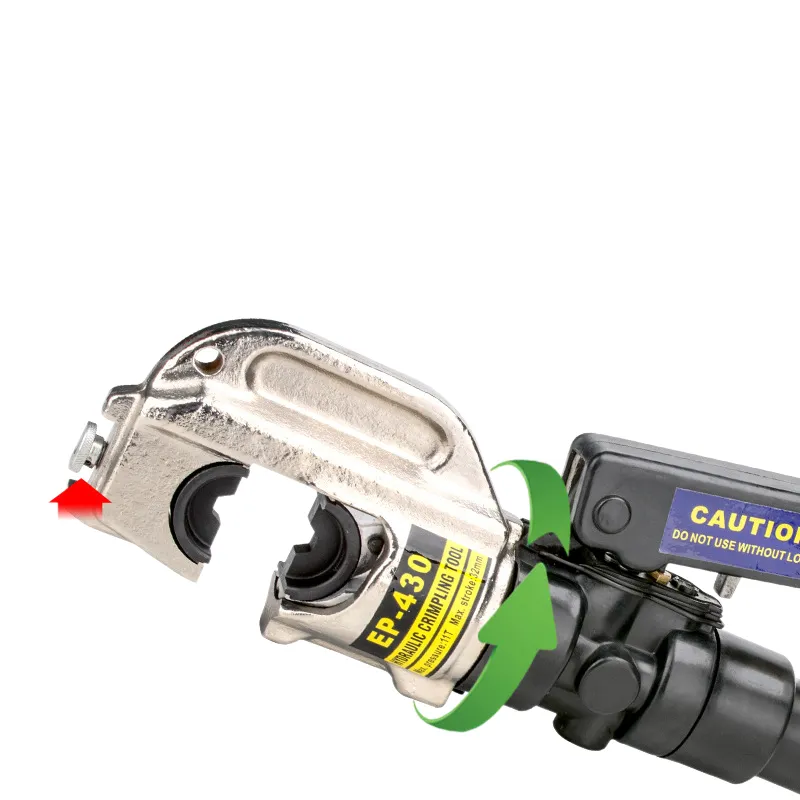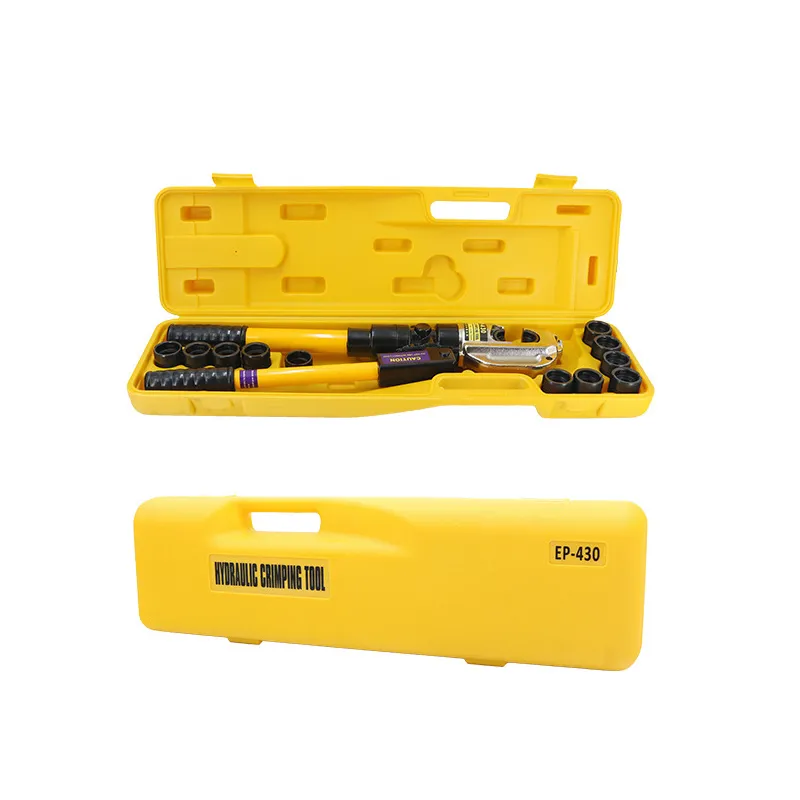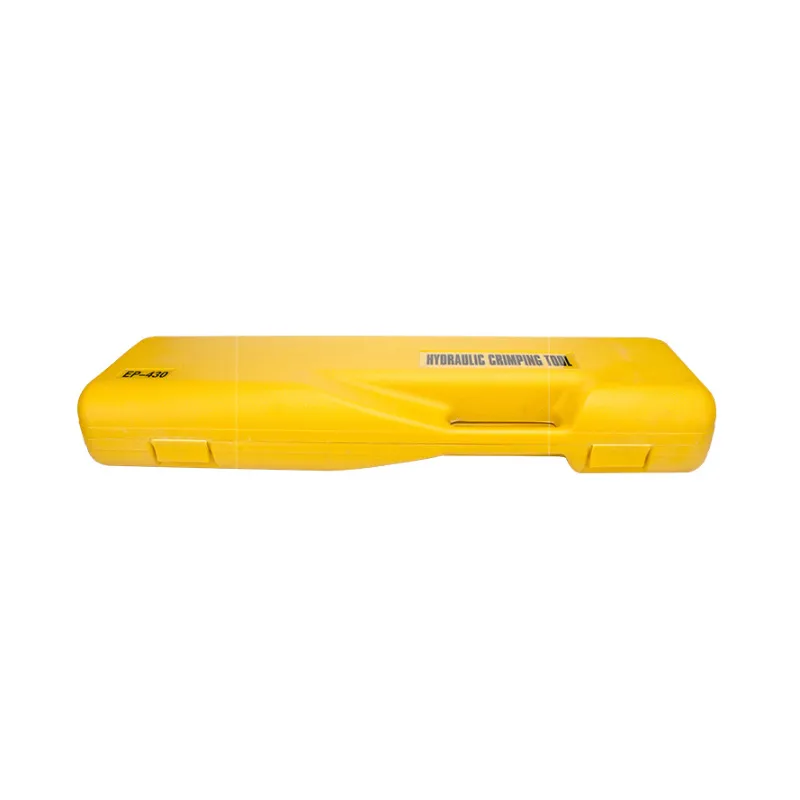


Oct . 02, 2025 14:45 Back to list
Need a Hydraulic Hose Crimping Tool that's Fast and Precise?
Hydraulic Crimping Pliers EP410/430/510: a field reporter’s take
If you’ve been shopping for a hydraulic hose crimping tool lately, you’ve probably noticed the terminology gets fuzzy. Many crews say “hose crimper” even when they’re crimping cable lugs—especially with compact hydraulic heads. Bilopowtel’s EP410/430/510 series, made in China, sits squarely in that crossover zone: a fast, stout hydraulic crimper for electrical terminals that, with the right dies and discipline, covers a surprising range of on-site jobs.

What’s moving the market
Two trends dominate: lighter handheld hydraulics and safer, standards-driven terminations. Contractors want single-handed operation, quick die swaps, and audit-friendly crimp results. Utilities and OEMs increasingly request pull-out data and certificates, not just “looks good.” Honestly, that’s overdue.
Quick spec snapshot (typical for this class)
| Model | Crimp Range (Cu/Al lugs) | Crimp Force | Pump Type | Weight |
|---|---|---|---|---|
| EP410 | ≈ 16–300 mm² (dies vary) | around 10–12 T | Manual hydraulic | ≈ 3.5–4.5 kg |
| EP430 | ≈ 25–400 mm² | around 12–14 T | Manual hydraulic | ≈ 4.5–5.5 kg |
| EP510 | ≈ 50–500 mm² | around 14–16 T | Manual or electric variants | ≈ 5.5–6.5 kg |
Real-world use may vary by die set, conductor class (stranded/compact), and terminal material.

Materials, build, and testing
- Head: forged steel, surface-hardened dies (often HRC mid‑50s range) for wear resistance.
- Pump: high-pressure hydraulic circuit (commonly up to ≈ 700 bar / 10,000 psi), with relief valve.
- Seals: NBR or FKM depending on spec; keep fluids clean per ISO 4413 good practice.
- Testing: routine pressure hold tests; sample crimp pull-out per IEC 61238-1 or UL 486A/B guidance.
- Service life: many users report several thousand cycles; maintenance (seal kits, clean dies) is key.
Applications (where it earns its keep)
Electrical contracting, switchgear assembly, rail signaling, wind turbines, data centers—places where verified terminations matter. Some teams also ask if a hydraulic hose crimping tool can do light hose ferrules. Short answer: only with the correct dies and OEM approval; otherwise stick to hose-rated machines per SAE J517/J343.

Advantages I noticed
- Fast approach with positive stop; consistent across shifts.
- Die ecosystem: hex, indent, and oval options; color-coded sets help techs avoid mix-ups.
- Safety: pressure relief, insulated grips; some variants support one-hand return.
Vendor comparison (field-price vibes)
| Vendor | Price Range | Lead Time | Certs/Docs | Support |
|---|---|---|---|---|
| Bilopowtel EP410/430/510 | $ (cost-effective) | Short–medium | CE, test sheets (on request) | Die sets, spares |
| Generic Import | $ | Varies | Basic | Limited |
| Premium EU Brand | $$$ | Medium | Extensive (UL/IEC test reports) | Global network |

Customization and process flow
Options I’ve seen requested: branded cases, special die profiles (tinned Al, fine-strand Cu), calibrated pressure settings, and bilingual manuals. Typical flow: choose conductor/terminal → pick validated die → trial crimp → measure barrel deformation → pull test → document. It sounds fussy, but it slashes rework.
Two quick case notes
- Municipal utility: swapped to EP430-class units; reported ≈18% faster panel builds and fewer re-crimps.
- Mining maintenance: EP510 with oversized dies handled thick lugs in cramped MCC rooms—techs liked the return speed.
Customer feedback: “The head clearance is better than our old unit,” one foreman told me; another said the hand effort “stays reasonable even in cold weather,” which, frankly, matches my winter-site experience.

Bottom line: if you need a dependable hydraulic hose crimping tool for electrical work (and want sensible documentation), the EP410/430/510 family is a solid short list pick. Just match dies to standards, log your pulls, and your QA manager will actually smile.
Authoritative citations
- IEC 61238-1: Compression and mechanical connectors for power cables—Test methods and requirements.
- UL 486A-486B: Wire Connectors; testing and performance for crimped terminations.
- ISO 4413: Hydraulic fluid power—General rules and safety requirements.
- SAE J517 and SAE J343: Hydraulic hose requirements and proof/impulse testing.
Latest news
Hydraulic Crimping Tool – Precision & Heavy-Duty Speed
NewsNov.05,2025
Cable Pulling Swivel | High-Strength, Anti-Twist, Stainless
NewsNov.04,2025
Cable Pulling Tools – Pro-Grade, Safe, Fast Install
NewsNov.03,2025
Hydraulic Crimping Tool – Fast, Precise, Quick-Change Dies
NewsNov.02,2025
Hydraulic Crimping Tool for Sale | Fast, Precise, Heavy-Duty
NewsNov.01,2025
Duct Rodder for Sale – Non-Conductive, Durable Fiberglass
NewsOct.31,2025









